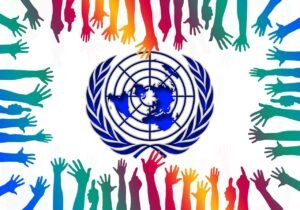The Most Common Global Economic Problems
Global economic problems refer to the challenges and difficulties that affect economies around the world, transcending national borders and influencing the interconnected nature of the global marketplace. These issues can stem from a variety of sources, including financial crises, trade imbalances, unemployment, inflation, and the effects of climate change. Understanding such problems is crucial in today’s world, where economic interdependence means that a disturbance in one region can ripple across the globe, affecting countless lives and communities.
The significance of addressing global economic problems lies in their far-reaching consequences on societal well-being and development. For instance, economic instability can lead to social unrest, increased poverty levels, and diminished access to essential services such as healthcare and education. By exploring these issues, policymakers and stakeholders can develop targeted strategies that promote economic resilience and support sustainable growth worldwide.
This blog post aims to delve into various global economic problems, specifically highlighting their causes, implications, and potential solutions. By examining these issues in depth, we aim to provide readers with a comprehensive understanding of the complexities surrounding global economics and the necessity for collaborative approaches to tackle these challenges. The discussion will encompass critical topics such as the persistent issue of income inequality, the repercussions of globalization, and the urgent need for sustainable development.
In essence, comprehensively addressing global economic problems requires a multifaceted approach, involving cooperation among nations, the private sector, and civil society. As we progress through this blog post, we will shed light on the various factors contributing to these challenges and consider how the world might work together to foster a more stable and inclusive global economy.
Inequality and Poverty
Income inequality and poverty rank among the most pressing global economic problems of our time. Over the past few decades, the wealth gap between the affluent and the less fortunate has widened significantly. This trend undermines social cohesion and economic development, as concentrated wealth often translates into diminished opportunities for the underprivileged. According to the World Inequality Report 2022, the top 10% of global earners now possess more than half of the world’s income, while the bottom 50% account for less than 10%. This alarming statistic highlights the growing disparity that exists within societies and across borders.
The root causes of poverty are multifaceted and can be attributed to a variety of factors including inadequate access to education, healthcare, and economic opportunities. In many developing countries, systemic issues such as corruption, poor governance, and political instability exacerbate the challenges faced by individuals trapped in the poverty cycle. For instance, a case study from Sub-Saharan Africa reveals that countries with limited educational resources experience higher rates of poverty. Without the means to acquire skills and knowledge, individuals remain confined to low-paying jobs, perpetuating the cycle of inequality.
The implications of income inequality and poverty extend beyond personal hardship. Economically, these issues destabilize markets and hinder growth. A report by the International Monetary Fund (IMF) suggests that reducing income inequality can yield substantial economic benefits, potentially increasing GDP growth rates in affected regions. Furthermore, social unrest and increased crime rates often correlate with higher levels of inequality and poverty, leading to a greater burden on governmental systems.
Addressing income inequality is not merely a matter of social justice; it is imperative for the long-term stability and development of global economies. Strategies focused on equitable distribution of wealth, such as progressive taxation and accessible education, are essential to alleviating poverty and creating a more balanced economic landscape.
Unemployment and Job Mismatch
Unemployment remains one of the most pressing global economic problems, affecting millions of individuals and disrupting communities. The complexity of unemployment is categorized into various types, including cyclical, structural, frictional, and seasonal unemployment. Cyclical unemployment occurs due to economic downturns, while structural unemployment is a result of changes in the economy that create a mismatch between the skills of the workforce and the needs of employers. Frictional unemployment, on the other hand, is transitional and temporary, as individuals move between jobs, and seasonal unemployment occurs during specific times of the year when certain industries reduce their workforce.
Job mismatch contributes significantly to unemployment rates, as individuals may possess skills that do not align with available job opportunities. Technological advancements are a major factor in this phenomenon; while they can lead to the creation of new industries and job opportunities, they can also render certain skills obsolete. As automation and artificial intelligence become more prevalent, the demand for low-skilled labor diminishes, resulting in increased structural unemployment. Furthermore, globalization and shifting job markets exert pressure on traditional industries, leading to significant job dislocations.
Addressing unemployment and job mismatches necessitates a multifaceted approach focusing on skill development and job creation. Governments and educational institutions must collaborate to ensure that training programs are effectively aligned with market demands. Initiatives such as vocational training, apprenticeships, and lifelong learning opportunities are essential to equip the workforce with the relevant skills needed in a changing economy. Moreover, fostering entrepreneurship can stimulate job creation by encouraging individuals to start new ventures, thus providing alternative employment avenues. Ultimately, effective strategies for managing unemployment and job mismatch are crucial for sustaining a resilient global economy.
Inflation and Cost of Living Crises
Inflation represents a significant economic problem that influences consumer pricing and purchasing power on a global scale. It arises from various factors, including increased demand for goods and services, rising production costs, and expansive monetary policies. When the demand outstrips supply, prices tend to rise, which impacts not just the economy but the daily lives of individuals. The implications of inflation can be seen directly in the cost of living, particularly as essential goods and services become more expensive.
Countries navigate the complexities of inflation differently, often influenced by local economic conditions, government policies, and external factors. For example, while developed nations like the United States and Germany tend to experience moderate inflation rates, developing countries may experience hyperinflation, leading to soaring prices and a rapid decline in the value of currency. In the 1980s, hyperinflation in Zimbabwe and more recently, Venezuela, provide stark illustrations of how inflation can disrupt entire economies and erode purchasing power rapidly.
The historical context of inflation provides valuable insights into contemporary challenges. For instance, the oil crisis of the 1970s led to significant inflationary pressures worldwide, altering consumer behavior and policy responses across nations. Today, the aftermath of the COVID-19 pandemic has revealed vulnerabilities in supply chains while contributing to rising inflation rates, particularly in food and housing sectors. Furthermore, experts predict that inflation will continue to be a pivotal issue influenced by factors such as geopolitical tensions and climate change, which may disrupt production and supply routes.
Ultimately, the persistent rise in the cost of living due to inflation necessitates vigilant policy responses and consumer awareness. Countries must balance economic growth with stable pricing to avoid undermining the purchasing power of their citizens. Addressing inflation is critical for ensuring sustainable economic health as we progress into an increasingly interconnected global market.
Trade Wars and Protectionism
The current landscape of global economic relationships is increasingly shaped by trade wars and protectionist policies. Trade wars arise when countries impose tariffs and other trade barriers to protect their local industries from foreign competition. This can escalate into a tit-for-tat situation where countries retaliate against each other’s trade measures, leading to an environment of uncertainty and instability within international markets.
One of the primary causes of trade wars is the growing concern among nations about safeguarding domestic employment and industries. Nations perceive a threat from globalization, believing that imports can undermine local businesses. Consequently, many governments elect to implement protectionist measures, such as increasing tariffs on imported goods. These tariffs are designed to make foreign products more expensive, thereby encouraging consumers to purchase domestic alternatives. However, while this may protect some local jobs initially, the broader implications can lead to increased prices for consumers and retaliatory tariffs that further threaten economic relationships.
The impact of these policies is significant, affecting not only the countries directly involved but also their trading partners and the global economy at large. For example, trade wars can disrupt established supply chains, leading to delays in production and a decrease in efficiency for businesses across the world. Moreover, trade agreements that were previously established can become strained, making collaboration more challenging and reducing the potential for mutual economic growth.
Overall, trade wars and protectionism raise critical questions about the sustainability of free trade principles. As nations continue to navigate their economic interests, the ongoing tensions may redefine trade dynamics and influence international cooperation, underscoring the need for a balanced approach that considers the complexities of global economic interdependence.
Debt Crises and Economic Stability
The issue of rising debt levels, both at the national and personal levels, has been a significant concern for many economies, particularly in developing countries. As nations grapple with high levels of debt, the implications for economic growth and social well-being become increasingly evident. For many developing economies, the accumulation of both public and private debt can lead to precarious economic situations, often jeopardizing stability and hindering development efforts.
High national debt can result from various factors, including prolonged deficits, borrowing for public projects, and volatile global markets. Countries like Zambia and Lebanon have experienced severe debt crises, where the debt-to-GDP ratios soared, leading to unsustainable repayment obligations and diminished fiscal space for essential services. These circumstances can force governments to make difficult choices, often cutting social spending, which adversely affects the most vulnerable populations.
On the personal level, the growing trend of consumer borrowing—exacerbated by easy access to credit—further complicates the economic landscape. In many developing nations, individuals find themselves burdened with debts from loans taken for education, housing, or health emergencies. This personal debt crisis can lead to higher levels of household financial stress, reducing consumer spending and further constraining economic growth.
Addressing these debt crises requires a multifaceted approach. Debt management reforms could include restructuring debt agreements, promoting fiscal responsibility, and enhancing transparency in government borrowing. Additionally, international cooperation and assistance can play critical roles in stabilizing economies facing overwhelming debt burdens. By implementing sound economic policies and prioritizing sustainable growth, developing countries can navigate these challenges, fostering both economic stability and social progress.
Climate Change and Economic Impact
The economic ramifications of climate change have become increasingly pronounced, affecting various sectors globally. Rising temperatures and extreme weather events have led to significant costs associated with adapting to and mitigating the impacts of climate change. For instance, the construction of coastal defenses to combat rising sea levels or investments in agricultural technologies to cope with drought conditions can strain public and private budgets. This financial burden may divert funds from other critical services and investments, complicating economic growth.
Moreover, the ramifications of environmental issues can lead to financial instability. Businesses face increased operational risks due to unpredictable weather patterns, which can disrupt supply chains and limit production capacities. The agricultural sector is particularly vulnerable, as crops are increasingly susceptible to climate-related threats. This volatility not only affects farmers’ livelihoods but can also result in higher food prices, further exacerbating poverty and economic disparity. Thus, the economic impacts of climate change extend beyond immediate financial considerations, influencing broader socio-economic stability.
In response to these challenges, sustainable development and green initiatives are seen as paramount solutions. Transitioning towards renewable energy sources, improving energy efficiency, and promoting sustainable farming practices can mitigate the consequences of climate change while simultaneously fostering economic growth. Investments in green infrastructure, such as public transportation and energy-efficient buildings, not only help address environmental concerns but also create job opportunities and stimulate economic activity. Furthermore, policies that encourage environmental preservation can drive innovation and competitiveness in emerging green markets, contributing positively to overall economic resilience.
The intersection of climate change and economic growth presents complex challenges and opportunities. As the world grapples with these issues, prioritizing sustainable practices will be essential for ensuring long-term economic stability and environmental health.
Digital Economy and Technological Disruption
The emergence of the digital economy signifies a transformative shift in traditional economic structures, driven by rapid technological advancements. This new economic landscape is characterized by a reliance on digital technologies, which offer both opportunities for innovation and significant challenges that organizations and individuals must navigate. As businesses increasingly adopt digital platforms for operations, the complexity of economic interactions is enhanced, often leading to a disconnect between established practices and evolving digital norms.
One of the primary concerns regarding the digital economy is data privacy. With vast amounts of personal and organizational information being collected, stored, and processed, safeguarding this data has become paramount. Individuals frequently find themselves in precarious positions, having to balance the benefits of digital services against potential breaches of their privacy. Companies face the challenge of implementing robust cybersecurity measures, as failure to protect sensitive data can lead to profound repercussions, both financially and reputationally. Thus, addressing data privacy in the digital realm is not merely a legal obligation but a critical component in maintaining trust and reliability in digital transactions.
Furthermore, the rise of the digital economy accentuates the disparities in access to technology. While urban centers may flourish with innovation, rural and marginalized communities often lag behind, leading to a pervasive digital divide. This gap can result in unequal economic opportunities, where certain segments of the population are unable to fully participate in or benefit from the digital transformation. In addition, the paradox of innovation becomes evident; as new technologies emerge, they can displace traditional job sectors, creating both economic growth and employment challenges. As such, an equitable approach must be embraced to manage the transition into this new economic era effectively.
Globalization and Economic Disparities
Globalization refers to the interconnectedness of economies, cultures, and populations, facilitated by trade, technology, and communication. This phenomenon has led to significant benefits for many regions, including increased access to markets and the availability of a wider range of goods and services. For instance, global supply chains have enabled countries to specialize in the production of goods, thus enhancing efficiency and reducing costs. Furthermore, cultural exchanges foster innovation and creativity, broadening perspectives and encouraging collaborative efforts globally.
However, the effects of globalization are not uniformly positive, and concerns about economic disparities have arisen. While globalization can lead to economic growth in developing countries, it often exacerbates inequality within and among nations. Wealthier nations tend to reap the most benefits, accumulating resources and profits at a rate that poorer nations cannot match. This disparity can create a cycle of dependency, wherein developing countries struggle to compete due to their lack of infrastructure, education, and technological advancements.
Critics of globalization argue that while it promotes economic growth, it can also lead to the exploitation of labor and resources in lower-income nations. Multinational corporations may prioritize profits over ethical considerations, leading to low wages and poor working conditions for local employees. Additionally, local economies may suffer as traditional industries decline in the wake of global competition, resulting in job losses and community destabilization.
Moreover, cultural homogenization, a byproduct of globalization, can diminish local traditions and values, leading to resistance and pushback from communities striving to maintain their cultural identities. In addressing the complexities of globalization, it is crucial to recognize its dual nature, weighing both the opportunities it creates and the inequities it perpetuates in the global economic landscape.




